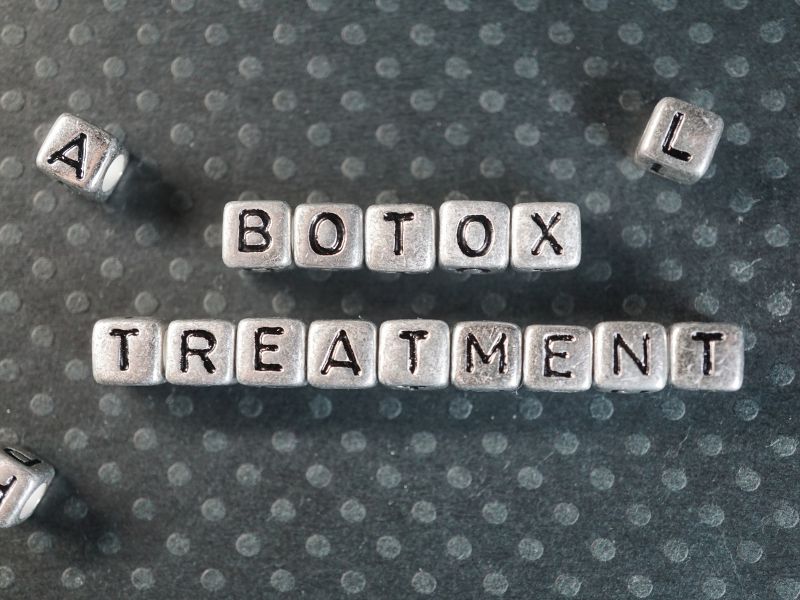Exploring the Versatile Uses of Botox in Dentistry at Fine Dentistry of Downtown Orlando

Exploring the Versatile Uses of Botox in Dentistry at Fine Dentistry of Downtown Orlando
Many people think that Botox can make you look better and get rid of wrinkles. But skilled dentists have turned this refined neurotoxin into a therapeutic and cosmetic tool that can be used in many fields besides dermatology. Botulinum toxin can help with pain in the face, jaw muscles, and even how a person's smile looks.
More and more, dentists are using Botox to fix problems that used to need surgery or machines. In this field, both how something looks and how it works are very important. We keep coming up with new ways to use this treatment as we learn more about it. It now helps patients feel better, get the right information, and find balance in ways that weren't possible before.
How Muscle Problems Can Damage Your Teeth
The jaw muscles are some of the strongest and most active muscles in the body. You can hurt your teeth and temporomandibular joints (TMJ) for a long time if you work these muscles too hard or don't put them in the right place. People with bruxism grind or clench their teeth without even realizing it. They often have headaches, broken teeth, and enamel that has worn away. People with temporomandibular disorders (TMD) have jaws that don't move well and pain in their faces all the time.
Many people still use occlusal splints and night guards, but they don't always work. This is when Botox starts to work in a doctor's office. Botox relaxes muscles that are working too hard, which helps relieve the stress and pressure that can hurt the structure and function of teeth.
Dental Botox for Aesthetic Improvement
When your muscles are tense, it can be hard to move, but it can also do other things. Moving the muscles can also change the way the face looks, especially around the mouth. If the muscles that lift the upper lip get too tight, they pull too much gum tissue up when you smile. This is what people call a "gummy smile."
Botox is a gentle answer in these situations. If you relax muscles that are too active, like the levator labii superioris, you can teach your upper lip to rest more naturally. This makes the smile look softer without having to have surgery. Dentists who know how the face works can look at more than just the teeth. They can also see how the soft tissues around the teeth make the smile look different.
Botox can also improve the look of cosmetic procedures like veneers or whitening by changing the shape of the lips and getting rid of fine lines around the mouth.
How the Treatment Works
Botox stops acetylcholine from being released at the junction between nerves and muscles. Acetylcholine is a chemical that tells muscles to contract. This way, you can relax some muscles without changing how the other muscles work. It is very important to get the right dose and placement in dentistry, especially since the face has a lot of complicated and closely-knit anatomy.
At the practice level, patients usually have a long consultation to see if they are a good fit. The doctor decides where and how to give the shots by looking at the size of the muscles, how the jaw moves, how worn the teeth are, and how even the face is. The treatments at the office usually don't take long, only 15 to 30 minutes. Patients don't hurt too much, and they can get back to their normal lives quickly.
After a few days, you can see the changes, and by two weeks, they are very clear. After the treatment, most patients feel or look better for three to six months, and then they need to get it again.
The Benefits Are More Than Comfort
Botox works in two ways in dentistry, which is why it works differently. People with functional disorders often say that their pain gets a lot better, their teeth stop grinding, and their jaw moves more easily. Tension headaches often go away when the masseter muscle relaxes. This lowers the chance that your enamel and joints will get hurt over time.
Patients look more relaxed and balanced, which makes their natural smile look better instead of changing it. Botox is also popular with people who want to look better without surgery or other more invasive soft tissue procedures because it is less invasive.
A dentist or facial specialist may also include Botox in a full care plan. It is a small but powerful addition to braces, cosmetic surgery, or therapy for TMJ.
Thoughtful Use Requires Consideration
Like any other treatment, Botox has its pros and cons. You have to keep doing it to keep the results because it only works for a little while. Most people can use it, but if you are pregnant or have a neuromuscular disorder, you may not be able to.
For treatment to work, it's very important to get the right diagnosis. Botox alone may not be enough to fix bruxism if it is caused by a blocked airway, a bad bite, or stress. It's better to think of it as part of a bigger plan than as a solution on its own in these situations.
How you do things is also important. Anatomical targeting helps relax muscles without changing them too much. It's very important to be precise in dentistry because even a few millimeters can change how people talk and how their teeth fit together. This shows how important it is for providers to get training and experience, especially when working with the muscles in the face and mouth, which are always changing.
Sustaining Results Through Integrated Care
Botox is helpful because it doesn't change and can be used in a lot of different ways. When used with regular dental care like bite adjustment, splints, or crowns, it helps keep restorations in good shape and the bite stable.
When patients come back for regular touch-ups, doctors can check the balance of their muscles, look for symptoms that come back, and change the injection plan if they need to. People who work together for a long time get better results and are happier.
Botox may also help put off or lessen the need for future restorative procedures by lowering the harmful forces that cause enamel loss and joint strain. This means that it does more than just help people; it also keeps them healthy.
A Better Way to Take Care of Your Whole Mouth
Dentists now use Botox, which shows how dental care is changing to take into account how the shape of the teeth, the way the muscles work, and the way the face looks all affect each other. When used correctly, Botox helps keep this balance by fixing problems, making people look better, and making them feel better.
It's not a trend that it's becoming more important; it's based on facts and experience. Dentists who have been trained know how to do it so that it looks good and is good for your health. Because of this, patients get care that is well-planned and works.
To find out more about how Botox could fit into your dental care plan, call (407) 777-2071 to set up a private meeting with one of our knowledgeable staff members.
